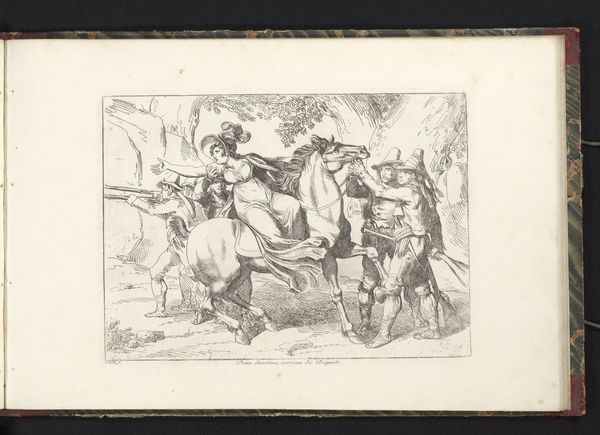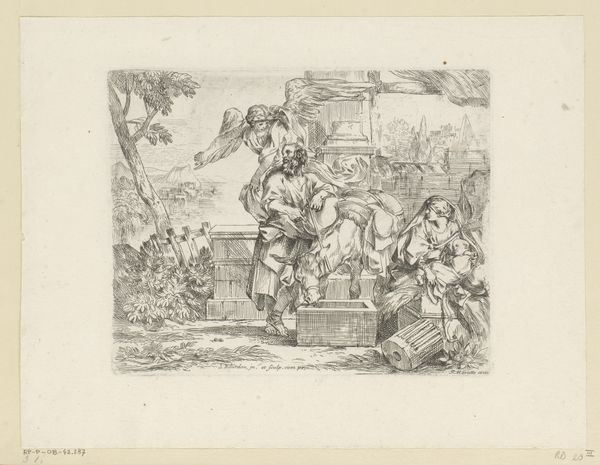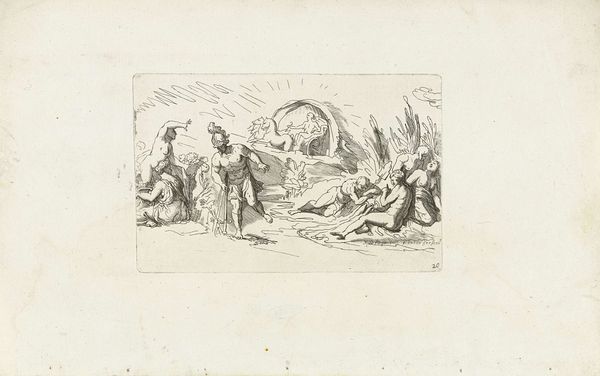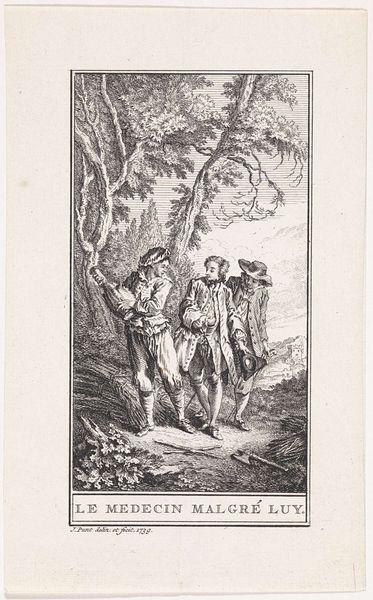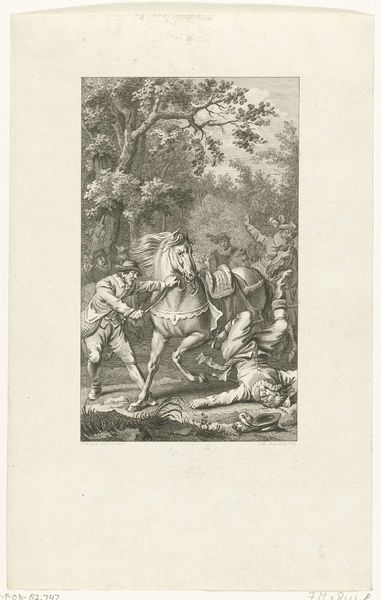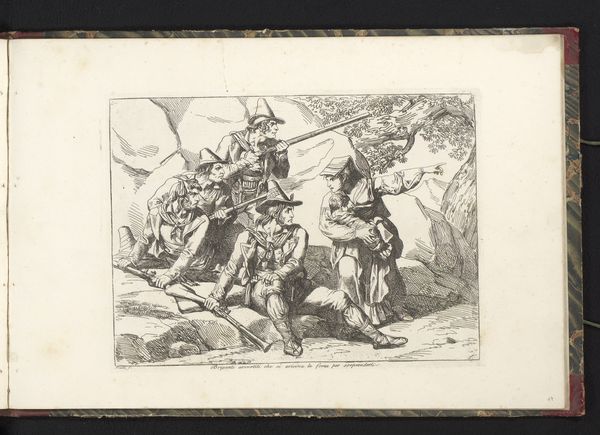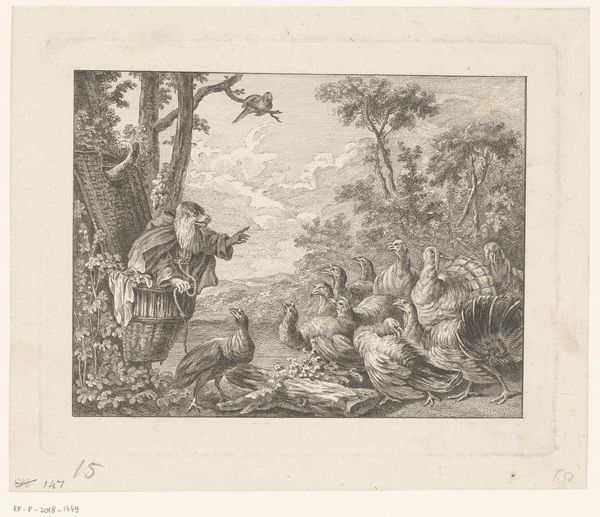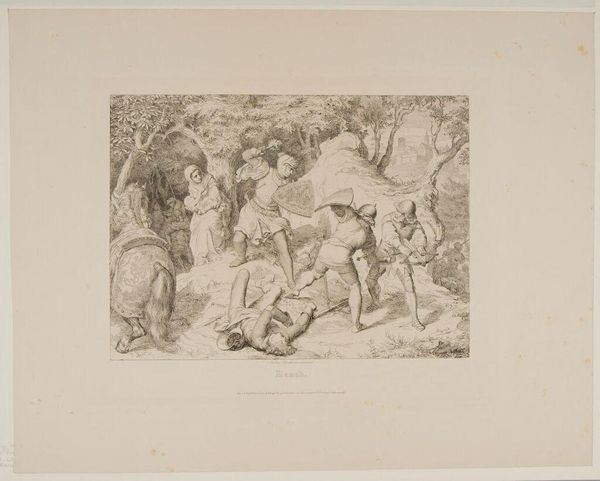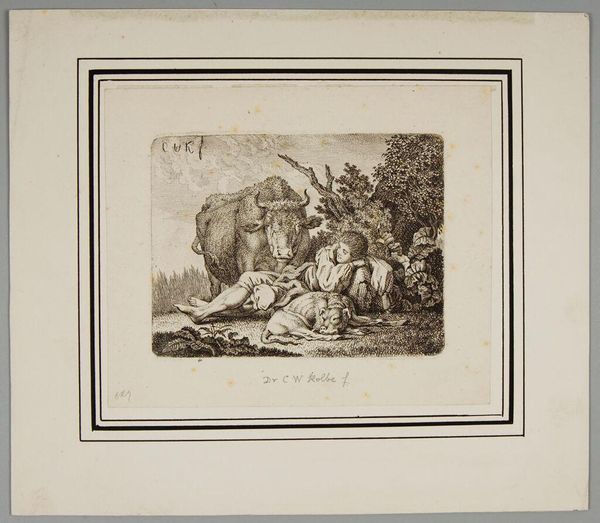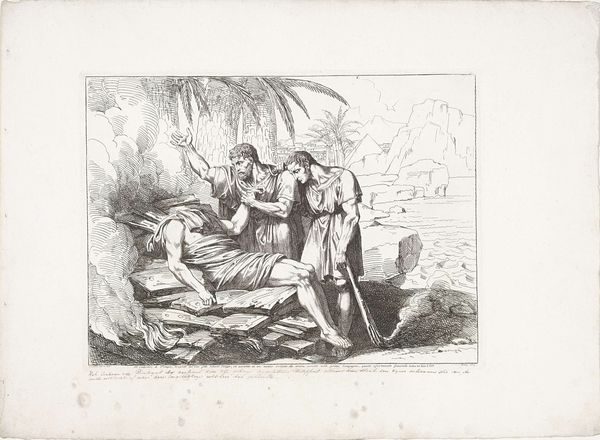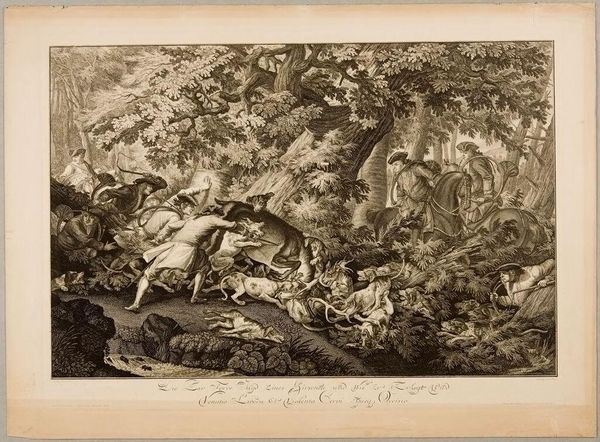
drawing, paper, ink
#
drawing
#
ink drawing
#
narrative-art
#
figuration
#
paper
#
ink
#
history-painting
Dimensions: height 314 mm, width 425 mm
Copyright: Rijks Museum: Open Domain
Curator: Bartolomeo Pinelli, a Roman artist, created this ink drawing on paper titled "Gaius Marius Found in the Marsh" in 1818. The scene depicts a cluster of Roman soldiers discovering a disheveled man within a swamp. Editor: The drama practically leaps off the page, doesn't it? The contrast between the reed's sharp, vertical lines and the slumped figure creates a fascinating visual tension. Curator: Indeed. Pinelli made many works focused on Roman antiquity, revealing an artistic market keen on associating current events to a glorious historical precedent, which often glossed over many darker parts. It's also worth noting that the neo-classical aesthetic dominated in the 19th century, influencing depictions of heroism. Editor: The iconography here is thick with meaning. Water often represents purification but here in the form of a marsh, it hints at decline and death, the physical world enveloping and ultimately defeating man. Gaius Marius seems a prisoner of the earth, robbed of his former glory. The soldiers, acting as both discoverers and captors, add another layer of symbolic complexity, suggesting perhaps conflicted loyalties within Rome. Curator: I agree, the ambiguous facial expressions of the soldiers point to the ambivalence of Roman power structures during periods of civil conflict, where Marius represented a populist challenge to the aristocratic status quo. His demise could symbolize a temporary triumph of the Senate. I see parallels with how Napoleon’s empire collapsed shortly before this work was made. Editor: It certainly feels like a visual meditation on the cyclical nature of power. And there’s an interesting dichotomy at play; while the setting feels timeless, the artist injects details like the soldiers' clothing with period accuracy adding verisimilitude. Curator: Pinelli's placement of Marius at the center could subtly critique authoritarianism—emphasizing his vulnerability in comparison to Rome's imperial ambitions, which echoes Enlightenment ideals circulating then. Editor: It's easy to see the symbolic pull between collapse and discovery, ruin and reinvention in the wake of this. It causes one to pause and reflect on not only the events in the picture, but the ones around us. Curator: Absolutely, Pinelli's choice of such a fraught scene underscores the ever-shifting tides of public sentiment and political will, and, in that, he offers a powerful commentary on history itself.
Comments
No comments
Be the first to comment and join the conversation on the ultimate creative platform.
